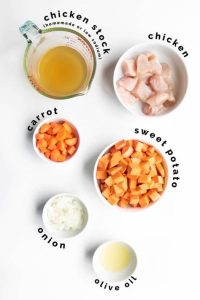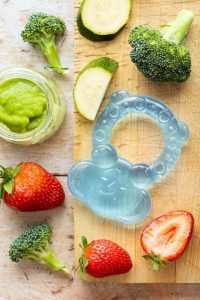Introducing your baby to solid foods is an exciting milestone. Vegetable baby puree is a great first step, packed with nutrients to support your baby’s growth and development. This comprehensive guide will explore everything you need to know about vegetable baby purees, from choosing the right ingredients to creative flavor combinations.
The Power of vegetable baby puree: Essential Nutrients for Little Bodies
Vegetable baby puree offers a variety of benefits for babies:
Nutrient Powerhouse:
Vegetables are loaded with vitamins, minerals, and fiber, all essential for a baby’s growth and development.
Exposure to New Flavors:
Purees introduce your baby to a world of new flavors, helping them develop a taste for healthy foods.
Building a Healthy Palette:
Early exposure to vegetables can help shape your baby’s future food preferences.
Always consult your pediatrician before introducing solid foods to your baby. They can advise you on the best time to start and answer any questions you may have.
Choosing Your vegetable baby puree: Selecting the Right Ingredients
Not all vegetables are created equal when it comes to baby food. Here are some tips for choosing the best options for your little one:
Start Bland:
Begin with mild-flavored vegetables like sweet potatoes, peas, or avocados.
Variety is Key:
Once your baby is comfortable with single-vegetable purees, introduce new flavors one at a time.
Fresh or Frozen:
Both fresh and frozen vegetables can be used to make purees. Frozen vegetables are a convenient option and can retain most of their nutrients.
Making Mealtime Fun: Vegetable Baby Puree Preparation and Storage Tips
Preparing homemade baby food puree is a great way to control ingredients and portion sizes. Here’s a basic guide:
- Steaming or Boiling: Steam or boil vegetables until tender. This preserves nutrients and makes them easier to blend.
- Puree Perfection: Use a blender or food processor to create a smooth consistency. Add breast milk, formula, or water if needed to achieve the desired texture.
- Storage Solutions: Homemade puree can be stored in the refrigerator for up to 3 days or frozen for longer storage.
Pre-Made Purees: A Convenient Option
Pre-made baby food pouches or jars can be a convenient option for busy parents. Here are some things to keep in mind:
- Read the Label Carefully: Look for purees with no added sugar, salt, or artificial flavors.
- Variety is Key: Choose a variety of brands and flavors to expose your baby to different tastes.

Flavorful Combinations: Beyond the Basics
Once your baby is comfortable with single-vegetable purees, it’s time to explore flavor combinations! Here are some ideas to get you started:
- Sweet Potato and Mango: The sweetness of the mango perfectly complements the sweet potato.
- Carrot and Apple: This classic combination is naturally sweet and babies love it.
- Butternut Squash and Pear: The creamy butternut squash pairs well with the mild sweetness of pear.
- Green Bean and Avocado: A unique and healthy combination with a touch of creaminess from the avocado.
The Art of Feeding: Spoons, Smiles, and Making Mealtime Positive
Mealtime should be a positive experience for your baby. Here are some tips for creating a happy feeding environment:
- Let Your Baby Take the Lead: Allow your baby to explore the puree at their own pace.
- Spoons Up!: Use a soft, age-appropriate spoon for feeding.
- Make Mealtime Fun: Sing songs, tell stories, and make mealtime a bonding experience.
Introducing your baby to vegetable purees is a delicious way to embark on a flavor adventure. With a little planning and creativity, you can create a variety of healthy and tasty purees that your baby will love. Remember, the most important thing is to have fun and enjoy this special time with your little one.
Beyond the Spoon: Exploring Self-Feeding with Vegetable Baby Puree
As your baby develops their fine motor skills, they may show interest in self-feeding. Here are some ways to incorporate vegetable purees into self-feeding experiences:
- Mash It Up: For a thicker consistency, mash cooked vegetables instead of pureeing them completely. This allows your baby to pick up the pieces and explore feeding themselves.
- Finger Foods Fun: Steamed veggie sticks like broccoli florets or sweet potato cubes can be a great way for babies to practice self-feeding. Make sure the pieces are soft enough for them to gum safely.
Safety First: Choking Hazards and Self-Feeding
- Always supervise your baby closely during self-feeding to prevent choking hazards.
- Cut food into age-appropriate sizes and shapes.
- Be patient and encouraging as your baby learns to self-feed.
It’s Not Always Pretty: Making Mealtime a Positive Experience
Mealtime with a baby can get messy, and that’s okay! Here are some tips for maintaining a positive atmosphere:
- Protect Your Surfaces: Use a wipeable placemat or tray to catch spills.
- Dress for Success: Consider using a bib with a pocket to catch drips and splatters.
- Focus on the Fun: Mealtime is about exploration and enjoyment, not perfection.

Variety is Key: Introducing New Textures and Flavors
As your baby gets accustomed to vegetable purees, you can introduce new textures and flavors to keep things interesting. Here are some ideas:
- Avocado. This naturally creamy fruit is a great source of healthy fats and has a mild flavor most babies enjoy.
- Yogurt. Plain, whole-milk yogurt provides probiotics and calcium. Choose unsweetened yogurt and avoid yogurts with added sugar.
- Sweet Potato. This naturally sweet root vegetable is a great source of vitamins and fiber.
Introducing your baby to solid foods is a journey of discovery for both of you. Vegetable purees are a nutritious and delicious way to kickstart this exciting adventure. With a variety of flavors, textures, and feeding methods, you can create a positive mealtime experience that your baby will enjoy.
It’s a Learning Process: Be Patient and Encouraging
Remember, your baby is learning to eat solid foods. There will be spills, messes, and maybe even some food rejections. Here are some tips for staying positive:
- Offer Choices: Present your baby with a few different options at mealtime.
- Make it Fun: Sing songs, play peek-a-boo, or tell stories to keep mealtime engaging.
- Be Patient: It may take your baby several tries to accept a new food. Don’t force it.
Conclusion: A Delicious Adventure Awaits
Vegetable baby puree is an antastic first step on your baby’s journey to healthy eating. By incorporating a variety of flavors, textures, and feeding methods, you can create a positive mealtime experience that sets your baby up for success. Remember, the most important thing is to have fun and enjoy this special time of exploration and discovery with your little one.
